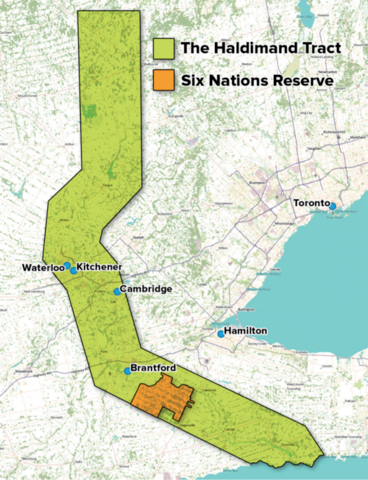There are three First Nations highlighted in the University of Waterloo Territorial Acknowledgement because of their post-contact documented occupation of the geographical areas related to the University of Waterloo locations. The groups are mentioned in the order they are known to have come to occupy the mentioned territory.
Attawandaron
“atta-wan-da-ron”
- The University of Waterloo Territorial Acknowledgement has traditionally used the term Neutral in place of Attawandaron, at this point in time both are acceptable but we suggest the territorial acknowledgement move to using Attawandaron.
- The term “neutral” was given by early French explorers because of their perceived neutrality between their neighbouring First Nation groups.
- The name Attawandaron was used by the Huron-Wendat and means “people of a slightly different language.”
- The Attawandaron name for themselves as a collective is unsettled.
Anishinaabeg
“anish-nah-beg”
- The Anishinaabeg gave themselves the name Anishinaabeg which means “the original people.”
- Other popular terms given to and used by the Anishinaabeg are Chippewa(s), Ojibway, or Mississaugas, for example, Mississaugas of the Credit or Chippewas of the Thames.
- For the purposes of a University of Waterloo Territorial Acknowledgement it is best to use Anishinaabeg.
- The University of Waterloo territorial acknowledgement recognizes the various Anishinaabeg groups (tribes) that utilized the region and have treaties involving broad geographical area the University of Waterloo is located within, namely the Mississaugas of the Credit First Nation and associated treaties, Dish with One Spoon wampum belt agreement of 1701, and the Huron Tract Treaty of 1827.
Haudenosaunee
“hoe-den-no-show-nee”
- The Haudenosaunee Confederacy gave themselves the name Haudenosaunee which means “People of the Longhouse” to recognize the nations coming together as one. The five original nations of the Haudenosaunee Confederacy were Mohawk, Oneida, Onondaga, Cayuga, and Seneca and later allowed the Tuscarora to join.
- The University of Waterloo territorial acknowledgement recognizes the Haudenosaunee of the Six Nations of the Grand River and the land granted by the Haldimand Treaty of 1784.

Map source: Adam Lewis, “Living on Stolen Land,” Alternatives Journal December 2015
About the Haldimand Tract
On 25 October 1784, Sir Frederick Haldimand, the governor of Québec, signed a decree that granted a tract of land to the Haudenosaunee (Iroquois), also known as the Six Nations, for their alliance with British forces during the American Revolution (1775-83). The Haldimand Tract extends by 10 kilometers on both sides of the Grand River, from its source in Dundalk Township to its mouth at Lake Erie. Originally, 950,000 acres was designated for the Haldimand Tract, today approximately 48,000 acres remain. Read Six Nations Lands and Resources (PDF) to learn more about the history and ongoing negotiations.